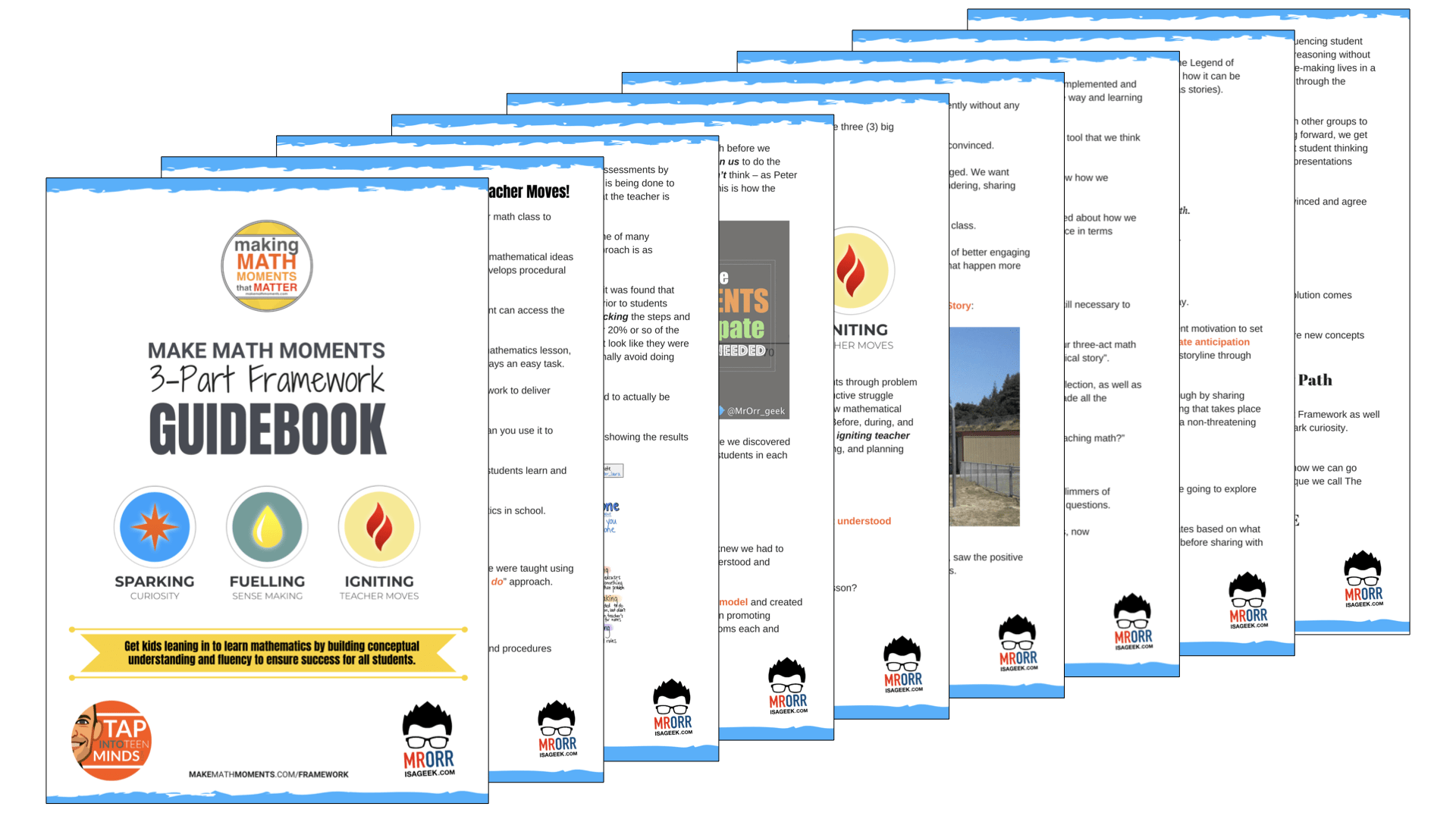Reasons Why Excellent Ideas Are Often Wasted
This morning I woke up to an email from Jean-Baptiste Huynh, a mathematics teacher from Oslo, Norway and creator of the algebra-based math game called DragonBox. You may recall from a previous post that I am a big fan of DragonBox and have mentioned this in a DragonBox Review that includes a video.
Here is the email I received:
Hello Kyle,
How are you doing?
I’ve been thinking a lot about how to change school in a more sustainable manner.
Many innovative teachers have excellent ideas, but often there is a lack of resources, expertise and time to implement them. And if they do, it is at their own costs and risks.
It would be great to address these barriers.
I was invited to give a TEDx Talk lately and I took this opportunity to reflect about what we did in my team and see what would be the next step to make changes sustainable and possible.
Here is the talk, certainly too long with poor english and a poor performance on my side. But I guess it conveys something important.
I would love to hear from you what you think could be done to remove the barriers to innovation.
What would be perfect for you to be able to take your ideas further?
Who can make it happen?
Has Canada a way to help you as a teacher to innovate like you do?
Jean
While I have been a big fan of DragonBox, I was unaware of the Ted Talk that Jean delivered recently and really enjoyed it. I think it is well worth the time for you to have a look:
Reading Jean’s email and watching his Ted Talk has had me thinking all morning. This would be no surprise for those who know me well, as I am rarely not thinking about something I could be doing. But this was different. Usually I am thinking about how I can make things better in my own classroom and will typically share the idea through my blog to see if it works for others as well. These questions from Jean are different; when it comes to removing the barriers to innovation in mathematics education, there are so many that I worry I may miss some important ones.
Barriers from the Provincial Level
Provincially, the barriers educators must overcome include the overwhelmingly large list of documents, resources, and initiatives that are continuously being passed down to each school board. For example, the list of Literacy and Numeracy Secretariat (LNS) Math Resources comes in at 59 documents in total, while the Curriculum and Assessment Policy Branch (CAPB) Math Resources comes in at 31. At first glance, you might think these resources should eliminate barriers to innovation. However, I think it might to do the opposite and put educators in more of a holding pattern due to the sheer volume of documents and initiatives coming their way.
While I’d like to consider myself a risk-taker in general, I do find myself questioning what direction I should go in when it seems every professional development session I attend shoots you in a different direction. Helping all educators feel confident that what they are doing in the classroom is and should be different than what is going on in the next is important. We know that differentiating instruction for students is important; why wouldn’t it make sense that the style in which each teacher delivers their lesson be differentiated to match their own personality and unique qualities?
Barriers from the System Level
From the system level, educators face barriers related to privacy policies, computer use agreements, general board policies, and many other restraints that can make it difficult at times to go against the grain. There are always some who take risks and try to make decisions based on what is best for the student, but if the risk does not yield the expected reward of increased student achievement, there could be consequences to follow. Like in most situations, it is much easier to follow the herd than to go off alone and I think this is the path taken by most.
Barriers from the School Level
Some of the most difficult barriers exist at the school level, where teachers can easily be judged by administration, colleagues, parents, and students. Regardless of the outcome, taking a risk by introducing change makes everyone nervous. You know the saying: “if it ain’t broke, don’t fix it!”
In order to take a risk by introducing a new idea in the classroom, the educator must:
- commit a significant amount of personal time to plan
- have a high level of confidence as an educator
- be willing to accept the hurdles and failures that will likely result
- be able to endure the initial negative response from stakeholders
While educators probably have some of these characteristics, it is not so common to have all four. Taking risks requires teachers to have thick skin and the drive to push forward when it seems that the majority might be against you. A perfect example would be a colleague of mine, Craig Guthrie. Both of us have teamed up for a TLLP Project that introduced a 1:1 iPad Project for grade 7 and 8 math in our school. He has been working tirelessly to try and maximize the potential the technology can provide including the use of Google Apps for Education, a flipped classroom model, and a completely paperless environment. He is a month into the school year and has received a pretty extensive push-back from parents and even some other teachers in the building. After receiving a significant beating on his confidence and spending quite a bit of time trying to defend what his vision is for the class, he decided to have a parent information night and a staff professional development session shortly after. He now feels that parents and teachers may understand his vision and he hopes to have more support as he tries to redefine mathematics learning in his classroom.
Although Craig has taken some excellent steps to gain more support for his innovations, I’m sure there was a time when he questioned whether or not it was all worth it. I don’t think Craig is the only innovator in education that has had the same feeling. The naysayers will always be a barrier to innovation, but sometimes even innovators themselves can create barriers as I discussed here.
Breaking Down the Barrier of Failure
While there are many barriers that hold educators back from innovating in their classrooms, I think failure is one of the largest that could be easily addressed. Teachers are pressured to differentiate instruction, implement research driven strategies, and provide multiple opportunities through varied assessments all while being told immediately after that students must also improve on non-differentiated, snap-shot assessments like a standardized test. Mixed messages being sent from above can make it very difficult for teachers to become comfortable with failure. Similar to the path a struggling student may take in your classroom, it is easier to fail with the excuse of the little effort or dedication to the task rather than giving your all and failing.
We ask students to celebrate failure in order to become better in our own classrooms. Why not model this for students by celebrating failure to allow educators feel more comfortable with trying new strategies to help address the student learning needs in our classrooms? Introducing student success initiatives such as the Middle Years Collaborative Inquiry led by Justin Levack and myself or the Student Success School Support Initiative led by Jay Lynn are great starts. However, we still need the leaders above us to make it known publicly that failure is a natural first step to success.
What are some barriers you face when trying to innovate in your classroom?
WANT TO LEARN HOW TO TEACH THROUGH TASK?

Share With Your Learning Community:

About Kyle Pearce
I’m Kyle Pearce and I am a former high school math teacher. I’m now the K-12 Mathematics Consultant with the Greater Essex County District School Board, where I uncover creative ways to spark curiosity and fuel sense making in mathematics. Read more.
Read More From The Blog
